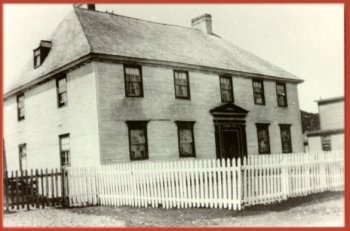Blenheim House

Roger F. Sweetman built Blenheim House shortly after he arrived in Placentia in 1780 to manage
the family business. The year of construction was 1786. Built in a tradition similar to the West
Country houses, it had a prominent hipped roof. One of the most unique characteristics of the
house, besides its huge size, was the partitions were lined with bricks. These bricks were half as
large again as those commonly used in construction and apparently used for insulation purposes.
This house was built on the most fertile piece of land in Placentia and surrounded by a beautiful
lawn. It is reported that the soil for the lawn was brought over from Ireland in bags on
Sweetman's ships primarily for that purpose. [It is also possible that these bags of soil were used
as ballast for the ships on a route to Placentia.] Sweetman built this huge mansion with materials
that he brought, precut from Ireland. This house was a similar design of Roger F. Sweetman's
home, Blenheim Lodge, Ballymaclode, Co. Waterford. Blenheim in Ireland was on a substantial
villa of thirty acres of land on the south bank of the Suir.
Blenheim House was taken down in 1937. But some materials were used in the construction of
Mr. James Verran's (a descendant of Roger F. Sweetman) house. Mr. Verran's built his house
where Blenheim once stood. Several pieces of furniture used in the house are still in
Newfoundland today. A huge dresser and the Hand Desk that Sweetman used on board his ships
for writing letters are at the museum in St. John's. The safe which Sweetman used to maintain
many of his documents is stored at Castle Hill Historic Park.

Sources:
The Placentia Area Historical Society Files

